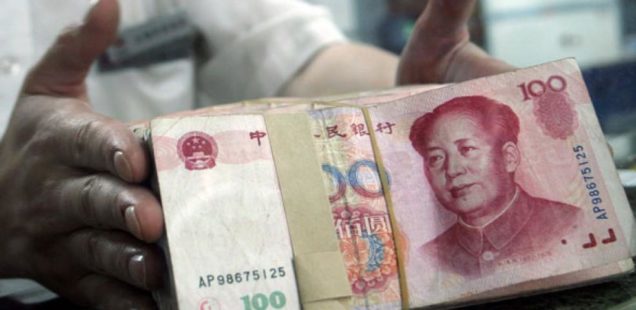
Are China’s Hidden Liabilities Behind Moody’s Ratings Downgrade?
Concerns about China’s “massive debt burden” and slowing economy are causing new concerns after Moody’s Investor Services sounded a full-blown alarm this week downgrading China’s credit rating on sovereign debt from Aa3 to A1.
Why would Moody’s cut China’s rating now for the first time since 1989? Marie Diron, an associate managing director in the Moody’s risk department, explained, “The downgrade reflects Moody’s expectation that China’s financial strength will erode somewhat over the coming years, with economy-wide debt continuing to rise as potential growth slows. While ongoing progress on reforms is likely to transform the economy and financial system over time, it is not likely to prevent a further material rise in economy-wide debt and the consequent increase in contingent liabilities for the government.”
Put simply, China’s economy is slowing, and its financial position is deteriorating because the government is spending too much money to try to sustain rapid growth. More fundamentally, President Xi isn’t shifting China into a market economy as fast as Moody’s thinks he should.
Yes, the Chinese economy is slowing. Its GDP is now expanding by 6.5 percent and 7.5 percent. The years of 10 percent growth are indeed gone, boosted by massive debt-ridden government stimulus.
Even so, when you compare China to other developed countries the macroeconomic numbers as reported seem reasonable. China’s forex reserves, at $3 trillion, are larger than the entire German economy. Government debt weighs in at 43 percent of GDP. U.S. government debt, to put this in perspective, is about 104 percent of GDP. For Britain, the figure is about 90 percent.
But total debt in the economy, public and private, is the real issue. In China, it’s about 250 percent of GDP. Sound high? It compares with 600 percent in Japan and 380 percent in the U.S.
What about external debt? Again, it’s hard to see what’s to fret about. China’s external obligations are 12 percent of GDP, but 20 percent of that is denominated in renminbi, which pushes debt owed in foreign currencies to less than 10 percent of GDP—enviable by any measure. China now runs a current-account surplus equal to 2.6 percent of GDP—the dream of any fiscal hawk. It’s a deficit in the U.S. case—oddly enough, the same 2.6 percent of GDP last year.
As the world’s No. 2 economy matures, it’s growth is supposed to slow to long-term sustainable levels. Even though government debt was stable in 2016, and the finance ministry forecasts no increase in risk in the 2018–2020 period, that’s not the whole story.
Moody’s didn’t report, according to The Wall Street Journal, the “hidden liabilities” the Chinese government had been paying off over the past two years to failed state-owned companies. They created a kind of Troubled Asset Relief Program (TARP) and may soon have to bail out the banks that got stiffed on the loans they made.
The rating agency that dozed blissfully as the mortgage crisis was about to implode nine years may have overreacted to China’s debt, especially since the government has more control over its “assets” and can keep them in line
Although the finance ministry has acknowledged its debt crisis and has taken appropriate steps, it didn’t appreciate the move by Moody’s and said so in a statement issued last Wednesday: “Moody’s has overestimated the difficulties faced by China’s economy and underestimated the government’s ability to deepen reforms.”
Having seen this kind of trans–Pacific overreaction while living in East Asia, I put it down to two factors.
One, Western analysts, especially vigorous free-market advocates, have trouble reading fundamentally different economies, especially when the role of the state is at issue. When China’s reforms are all in place, it’s still not going to look all that much like the American economy.
Two, while the Xi government is thoroughly committed to capitalist reform, Western expectations as to the pace are consistently unrealistic. Xi and the ruling Communist Party have a long-range timetable that doesn’t match the expectations of western analysts.
The offshore renminbi, which trades freely outside China, dipped 0.13 percent on Moody’s news but took most of that back by session’s end. The controlled onshore renminbi market simply shrugged.
In the bond market, yields on China’s five-year benchmark instrument bumped up from 3.8 percent to 3.95 but dropped back before the end of morning trading. The Shanghai and Shenzhen stock exchanges followed the same pattern: a jolt, then regained composure. If it sounds like Chinese markets don’t care much about what Moody’s thinks, you have good hearing.
Ironically, the most likely consequences of the Moody’s re-rating will be self-fulfilling. If financing costs rise in offshore markets, Chinese borrowers will refocus on domestic funding sources, and that will stretch aggregate debt out further.
Overall, Moody’s hasn’t made the work of China’s finance ministry bureaucrats any easier. And what was the point if it has made things marginally harder?

